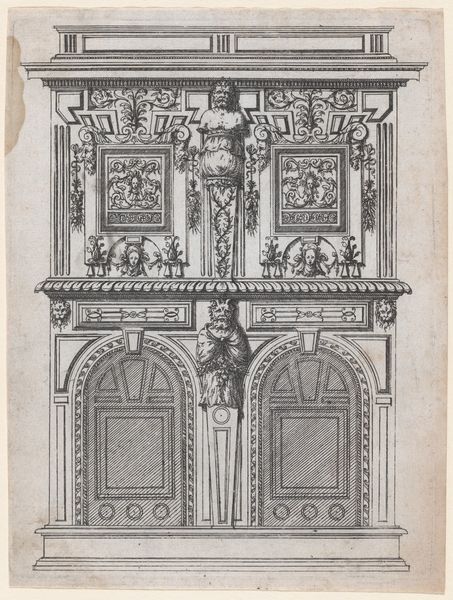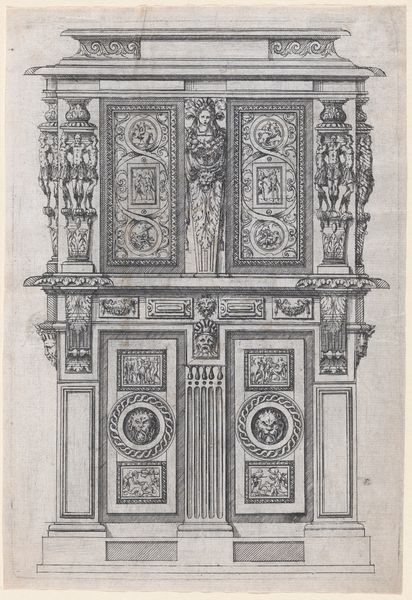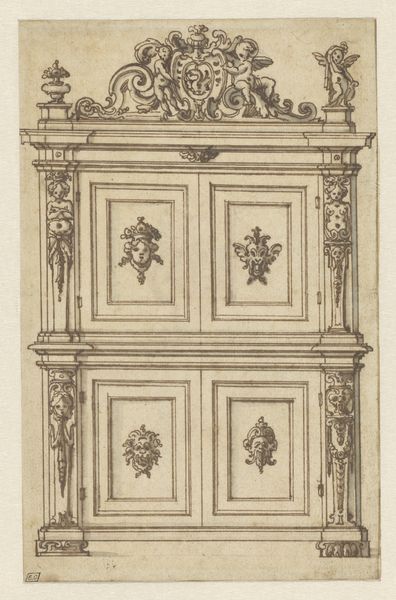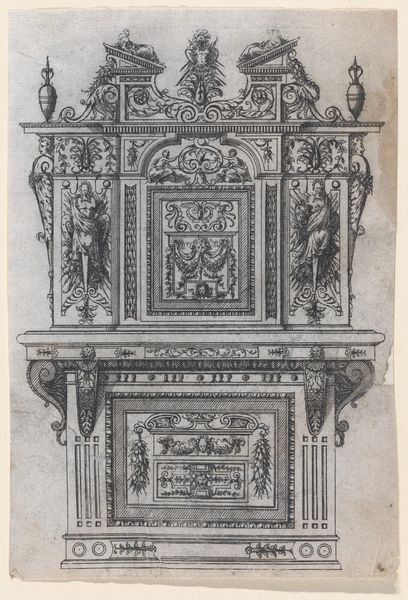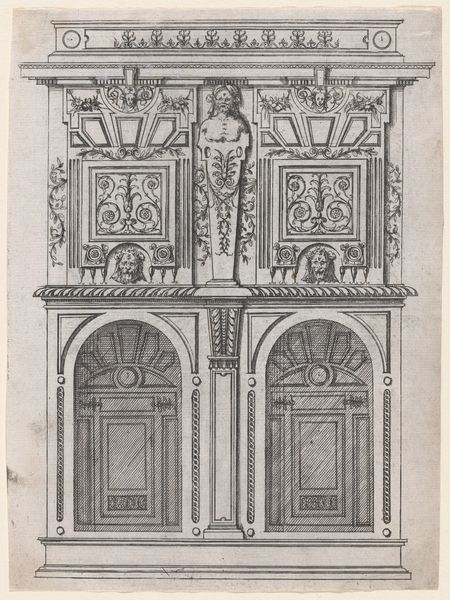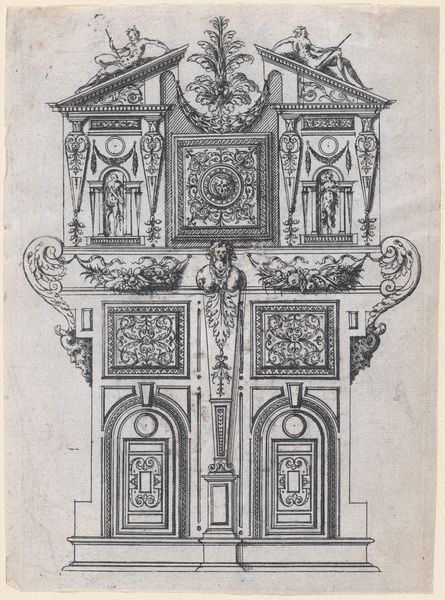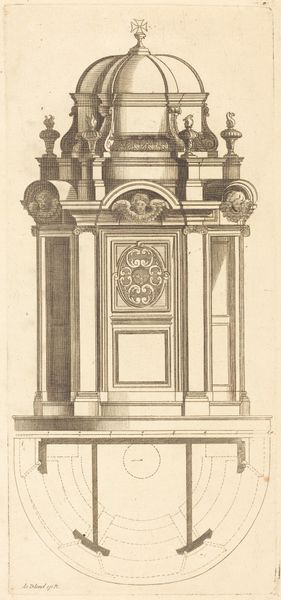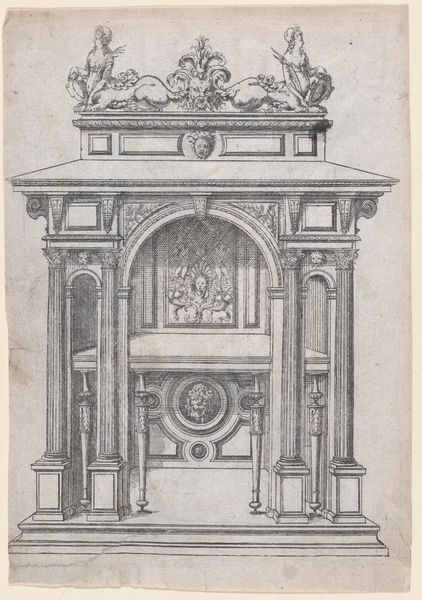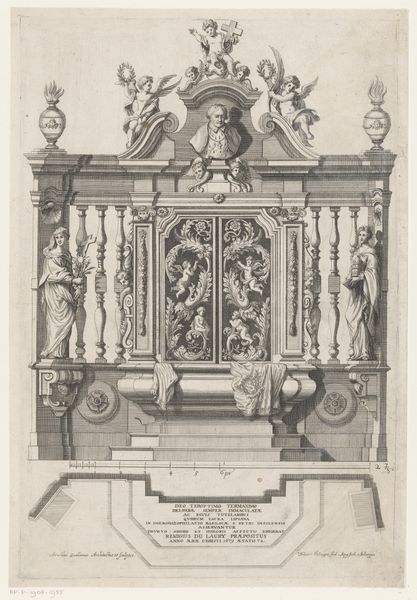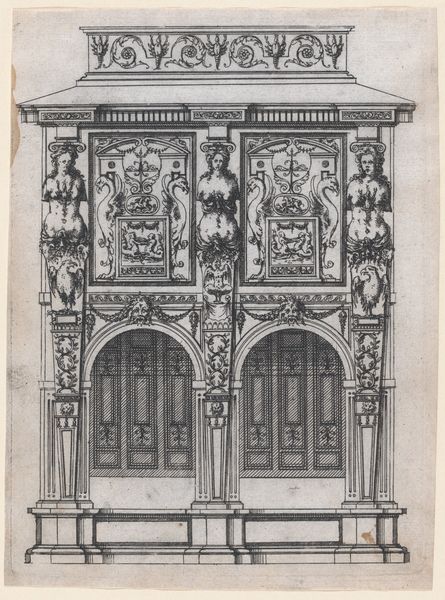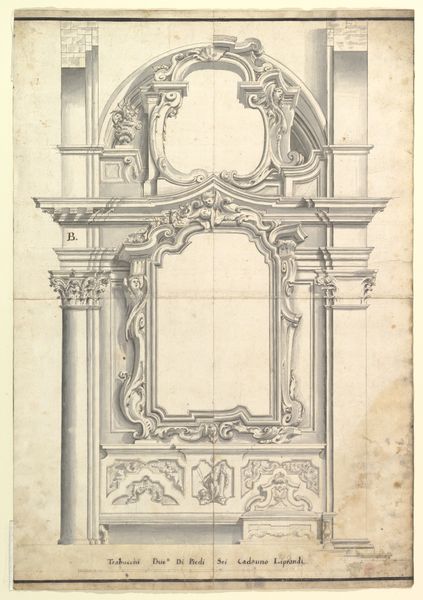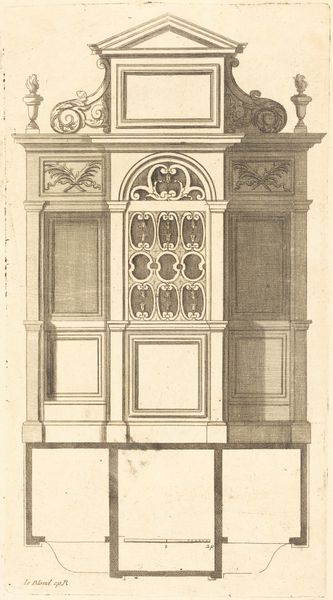
drawing, print, metal, engraving
#
drawing
# print
#
metal
#
11_renaissance
#
engraving
Dimensions: Sheet: 7 15/16 × 5 3/8 in. (20.2 × 13.6 cm)
Copyright: Public Domain
Curator: What we're looking at here is entitled "Furniture Design" by Jacques Androuet Du Cerceau. It was created sometime between 1530 and 1585, during the Renaissance. It’s a metal engraving, currently held at the Metropolitan Museum of Art. Editor: It feels very controlled, very structured. There's an incredible amount of detail; look at all of the repetitive patterns and figures etched into the panels. Everything is very meticulously planned, right down to the swirling decorations. It has an almost oppressive sense of order. Curator: And that reflects a broader impulse within Renaissance art and society. The rise of humanism placed a renewed emphasis on classical forms and ideals. Du Cerceau, through his engravings, played a crucial role in disseminating those ideals, making designs accessible to a wider audience. Think about the rising merchant class! Editor: Absolutely. This isn't just art; it's a pattern or template designed to be reproduced. How would metal engraving affect access to design during this period? Did the use of metal contribute to the industrialization of interior design? You see the same design repeated—the material processes dictate its proliferation. It's a fascinating intersection of artistic vision and practical application, blurring lines between high art and design. Curator: I agree. The print facilitated the spread of new architectural and design vocabularies beyond the elite circles that traditionally commissioned art. It democratized access, in a way, contributing to a visual language for those aspiring to rise socially. But let's consider who really benefited from the creation and dissemination of these engravings. How did the process affect the craftsman involved in both its production and actualization of the design? Editor: Exactly. It makes one consider the conditions of production—the labour involved. Was this meant as a proposal for a commission? Is it speculation or a way of showing prowess through the creation of highly stylized images for consumption and patronage? What craftspeople might have interpreted his drawing and what control did they exercise over material selection? Curator: Examining art objects in the way that you suggest brings forth questions of the lives of many people, from all rungs of society. And that helps us to see that art never emerges from thin air. It exists because of material means, skill, imagination and power. Editor: Yes. From its form and medium to its cultural context and social impact, “Furniture Design” encourages us to rethink how we create, consume, and understand the relationship between art and its role within material culture.
Comments
No comments
Be the first to comment and join the conversation on the ultimate creative platform.
